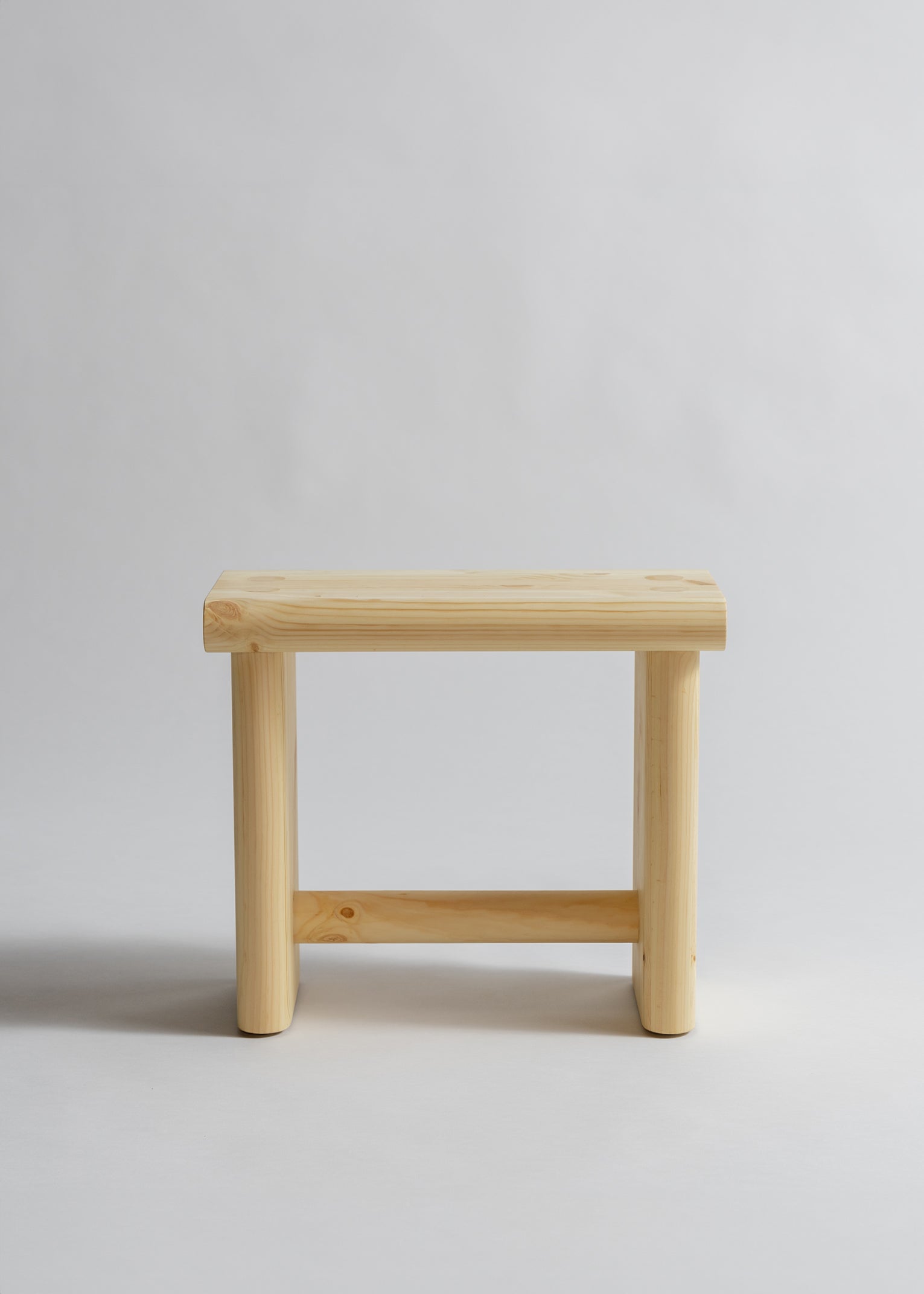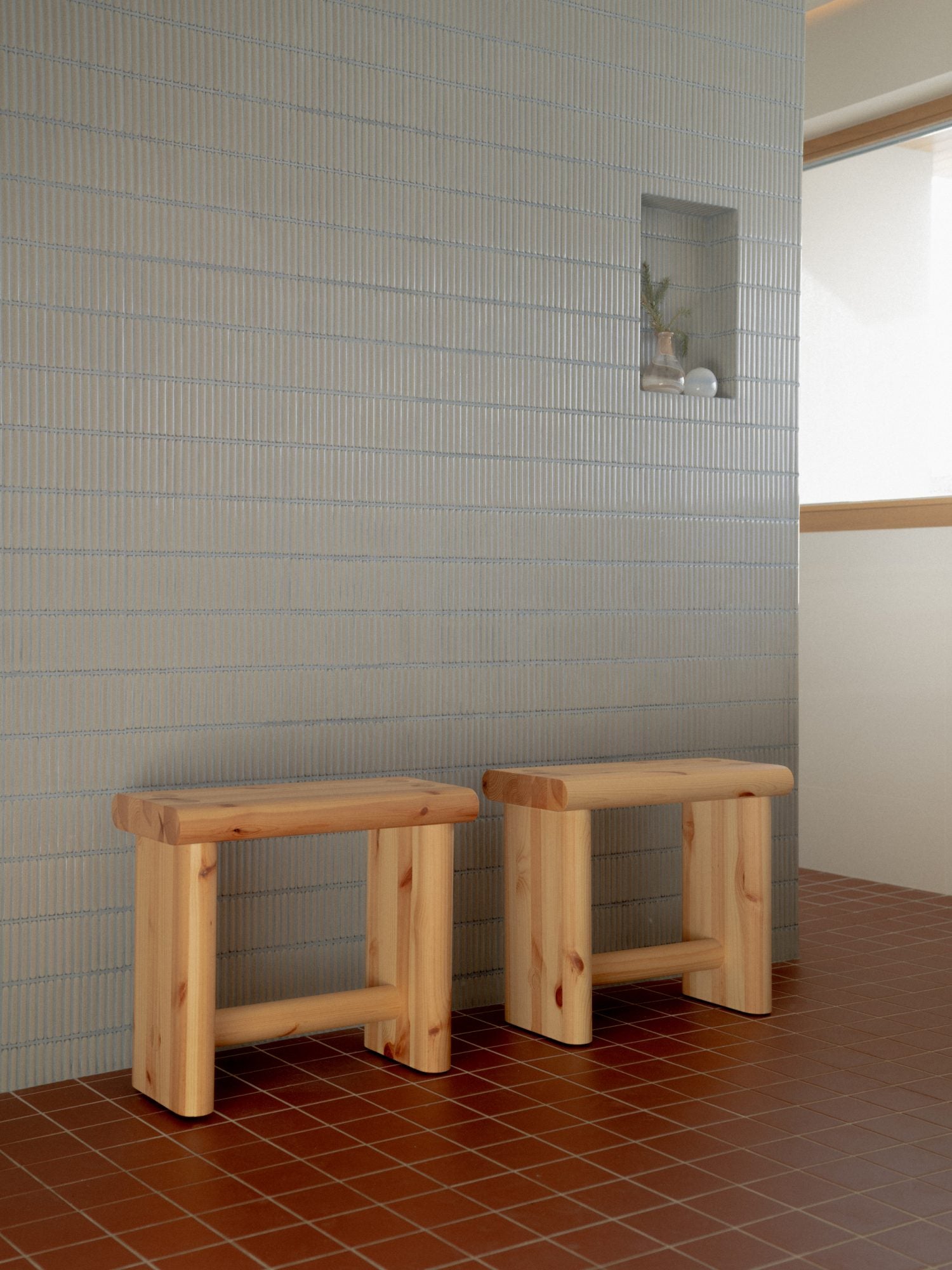Vaarnii’s 002 Ast wooden stool, designed by Dimitri Bähler, is characterized by an unpretentious design that combines the rustic with the modern. The small wooden stool consists of thick, sturdy pieces of pinewood, its only decorations being the gently rounded edges and the knots and lively grain typical of pine.
The name of the stool, Ast, is German and means “branch”, alluding to the knots that underline the strong yet often overlooked material. In addition to an extra seat, Ast can be used as a nightstand or side table.







